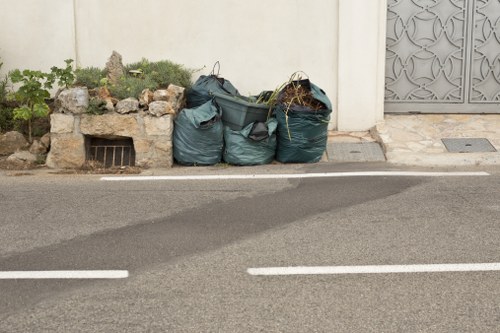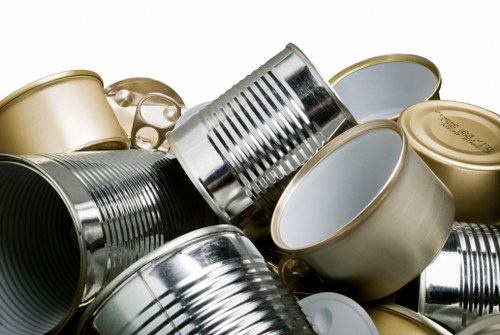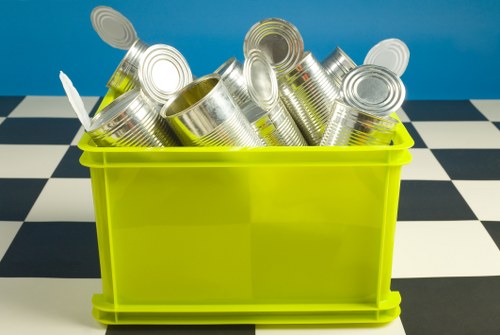Council Large Item Collection London

Living in London comes with its unique set of challenges, one of which is managing large household items that need disposal. Whether you're moving, renovating, or simply decluttering, understanding how the council large item collection works can save you time and hassle.
Council large item collection is a service provided by local authorities in London to help residents dispose of bulky items that cannot be handled by regular waste collection. This includes furniture, appliances, and other sizeable objects that are no longer needed.
In this article, we'll explore everything you need to know about council large item collection in London, including how to schedule a collection, what items are eligible, and tips to make the process smoother.
What is Council Large Item Collection?

Council large item collection is a municipal service designed to remove bulky waste from households. Unlike regular trash collection, which handles everyday waste, large item collection focuses on items that are too big to fit in standard bins.
This service is essential for maintaining cleanliness and order in communities, ensuring that large pieces of unwanted furniture and appliances are disposed of responsibly.
Each London borough has its own specific guidelines and schedules for large item collections, so it's important to understand the rules that apply to your area.
How to Schedule a Collection

Scheduling a large item collection is typically straightforward, but the process can vary slightly depending on your London borough. Here are the general steps you should follow:
- Check Eligibility: Verify that your item qualifies for council collection.
- Book the Service: Use your council's online portal, phone service, or mobile app to schedule a pickup.
- Prepare the Item: Ensure the item is accessible on the day of collection, ideally placed at the curbside.
- Await Pickup: Once collected, the item will be taken away by council waste management services.
It's advisable to book the collection well in advance, especially during peak seasons, to ensure timely disposal.
Items Eligible for Collection

Not all large items are eligible for council collection. Typically, the following items qualify:
- Old sofas and couches
- Mattresses and beds
- Refrigerators and washing machines
- Televisions and other large electronics
- Tables and chairs
- Carpets and rugs
- Large plastic bins
However, certain items like hazardous waste, electronic waste, and construction debris may require special handling or cannot be collected through the standard large item service.
Always check with your local council to confirm whether your specific item is eligible for collection.
Scheduling Process

Once you've determined that your item is eligible, the next step is scheduling the collection. Here's a more detailed look at the process:
- Visit Your Council's Website: Find the large item collection section on your local council's website.
- Provide Necessary Details: Enter information about the item, including its type, size, and any special instructions.
- Select a Date: Choose a convenient date for the collection. Some councils offer specific time slots, so flexibility may be required.
- Confirm Booking: After submitting your request, you should receive a confirmation via email or SMS.
- Prepare the Item: On the day of collection, place the item at the designated pickup location, typically the curbside.
Remember to adhere to any specific preparation guidelines provided by your council to avoid delays or additional charges.
Fees and Regulations

Most London councils offer large item collection services free of charge, recognizing the importance of responsible waste disposal. However, there are exceptions based on the type and frequency of the service.
Some councils may charge a fee for additional items beyond the standard collection quota or for items requiring special handling. It's essential to review your council's fee structure to avoid unexpected costs.
Regulations are also in place to ensure that the collected items are disposed of sustainably. For instance, certain items may be diverted to recycling centers or charities instead of being sent to landfill.
Environmental Impact

Proper disposal of large items plays a significant role in reducing environmental impact. By using council large item collection services, you're contributing to:
- Reducing landfill waste
- Promoting recycling and reusability
- Minimizing pollution from improper disposal
- Supporting sustainable waste management practices
Many councils have partnerships with recycling facilities and charities to ensure that items are reused or recycled wherever possible. This not only benefits the environment but also supports community initiatives.
By participating in these programs, residents help create a cleaner, greener London.
Tips for Preparing Items

To ensure a smooth large item collection process, consider the following preparation tips:
- Clear a Path: Ensure that the route to the collection point is free of obstacles.
- Disassemble if Possible: Breaking down larger items can make them easier to handle and transport.
- Protect Fragile Parts: Wrap items with blankets or padding to prevent damage during collection.
- Label Items: Clearly identify the items to be collected to avoid confusion.
- Remove Hazardous Materials: Take out any hazardous substances like batteries or refrigerants, which may require special disposal.
Preparing your items in advance helps the collection team work efficiently and reduces the likelihood of delays or additional charges.
Common Misconceptions

There are several misconceptions surrounding council large item collection services:
- All Items are Free: While many services are free, some councils may charge for additional or oversized items.
- Any Time Collection is Available: Services are often scheduled and may not be available on short notice.
- DIY Disposal is Easier: Attempting to dispose of large items yourself can be hazardous and may violate local regulations.
- All Bulky Waste is Accepted: Certain items like hazardous waste or electronic waste may require specialized disposal methods.
Understanding these aspects helps ensure that you use the service effectively and comply with local laws.
Local Regulations

Each London borough has its own set of regulations governing large item collection. These regulations can include:
- The number of items you can dispose of per collection
- The types of items accepted
- Specific scheduling procedures
- Preparation requirements for items
- Recycling and disposal policies
It's crucial to familiarize yourself with your local council's guidelines to ensure compliance and avoid potential fines or rejected collections.
For accurate information, visit your council's official website or contact their waste management department directly.
Nearby Areas to London

While London itself has comprehensive council large item collection services, surrounding areas also benefit from similar offerings. Here are some of the closest areas to London and their unique features regarding bulky waste collection:
- Greenwich: Known for its maritime history, Greenwich offers timely large item collections with additional recycling options.
- Wandsworth: Residents enjoy flexible scheduling and a wide range of accepted items.
- Hackney: Hackney emphasizes eco-friendly disposal, ensuring items are recycled or donated when possible.
- Ealing: Ealing provides multiple collection points and clear guidelines for residents.
- Southwark: Southwark focuses on efficient waste management and offers assistance for special items.
- Islington: With a strong community focus, Islington encourages donating usable items before collection.
- Kensington and Chelsea: This area provides premium services, including same-day collections for urgent disposals.
- Hammersmith and Fulham: Comprehensive services with options for regular pickup schedules.
- Bromley: Bromley offers convenient online booking and clear preparation instructions.
- Haringey: Haringey supports sustainable practices by prioritizing recycling and reusing materials.
- Camden: Camden provides detailed guides and responsive customer service for large item collections.
- Tower Hamlets: With a diverse population, Tower Hamlets ensures services cater to various community needs.
- Barking and Dagenham: Focused on maintaining cleanliness, this area offers reliable and regular collections.
- Redbridge: Redbridge emphasizes environmental responsibility, promoting recycling and proper disposal.
Each of these nearby areas has tailored their large item collection services to meet the specific needs of their communities, making it easier for residents to manage bulky waste efficiently.
FAQs
1. How often can I schedule a large item collection?
Most London councils allow residents to schedule a large item collection once a week or as needed. However, some councils may have specific limits, so it's best to check with your local authority.
2. Are there items that cannot be collected through the council service?
Yes, items such as hazardous waste, electronic waste, and certain construction materials often require special disposal methods and cannot be collected through the standard large item service.
3. Is there a limit to the number of large items I can dispose of at once?
Many councils have a limit on the number of large items you can dispose of per collection. Exceeding this limit may incur additional fees or require scheduling another collection.
4. Can I donate my old furniture instead of using the council collection service?
Yes, donating items that are still in good condition is encouraged. Many councils partner with local charities, so you can arrange for your items to be donated instead of being collected as waste.
5. What should I do if my large item was not collected?
If your large item was not collected as scheduled, contact your local council's waste management department immediately. They can provide information on scheduling a re-collection or offer alternative disposal solutions.
